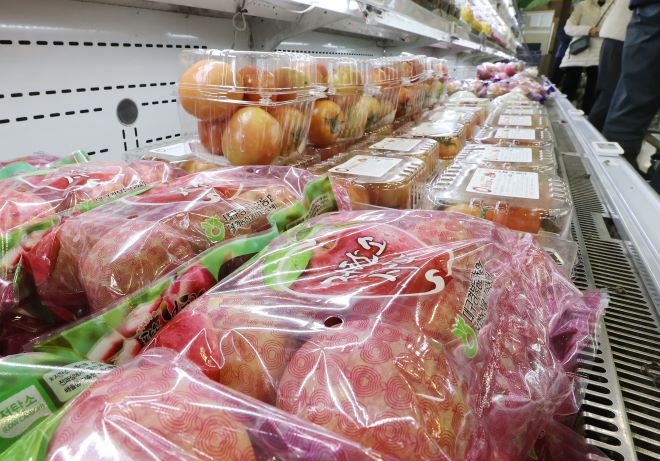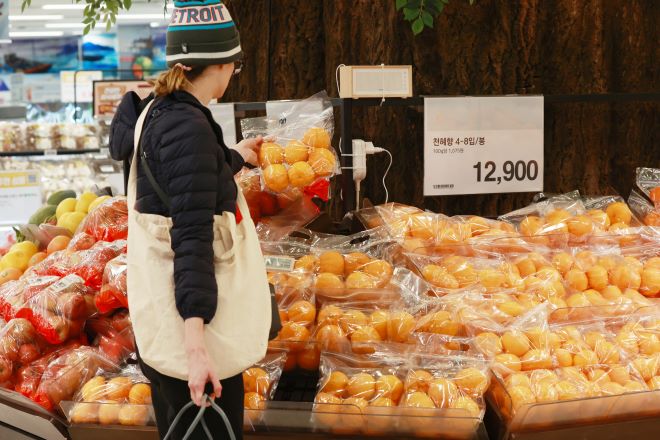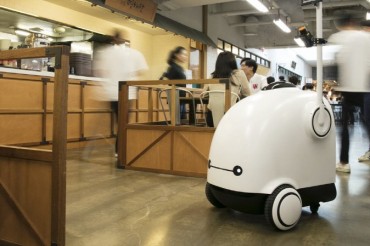
According to the consumer price trends released by Statistics Korea in February 2024, the fresh food index surged by 20.0%, primarily driven by a 41.2% rise in fresh fruits and vegetables. This marked the most significant increase in fresh fruits in 32 years and five months since September 1991, when it soared by 43.9%. (Image courtesy of Yonhap)
SEOUL, Mar. 9 (Korea Bizwire) – South Korea experienced its darkest winter in ten years from December to February, with sunlight levels plummeting, signaling potential difficulties for this year’s greenhouse crop yields.
Concerns are rising that the poor condition of crops such as cucumbers, strawberries, watermelons, melons, and oriental melons could lead to reduced production and subsequent price hikes.
According to the Rural Development Administration, the total sunlight hours from December last year to February 29 this year amounted to 411.1 hours, a significant drop from an average of 509 hours, representing only 80% of the typical levels.
This winter’s sunlight was the scarcest in a decade, starkly contrasting with the 586 hours recorded between December 2021 and February 2022, nearly a month’s worth of sunlight difference.
The prolonged lack of sunlight over three months has resulted in widespread damage to greenhouse crops across the country, from pest infestations to poor fruit setting and abnormal growth.
Despite government efforts to stabilize prices, the outlook for fruit and vegetable costs remains uncertain, further exacerbated by the 250% increase in precipitation levels compared to the average, leading to high humidity and challenging conditions for crop cultivation.

According to the consumer price trends released by Statistics Korea in February 2024, the fresh food index surged by 20.0%, primarily driven by a 41.2% rise in fresh fruits and vegetables. This marked the most significant increase in fresh fruits in 32 years and five months since September 1991, when it soared by 43.9%. (Image courtesy of Yonhap)
A farmer from North Chungcheong Province highlighted the adverse effects of excessive moisture and lack of sunlight on crops, emphasizing the critical role of sunlight in agriculture.
The reduced sunlight not only hampers crop growth but also raises concerns over rising consumer prices, particularly as vegetable and fruit prices have already begun to soar, contributing to a rebound in consumer price inflation.
The recent Consumer Price Index showed a 3.1% increase compared to last year, driven mainly by a 20.9% rise in agricultural product prices.
However, the Ministry of Agriculture, Food and Rural Affairs remains optimistic, forecasting an improvement in agricultural product supply and prices in March due to better weather conditions and expanded production areas.
Lina Jang (linajang@koreabizwire.com)






